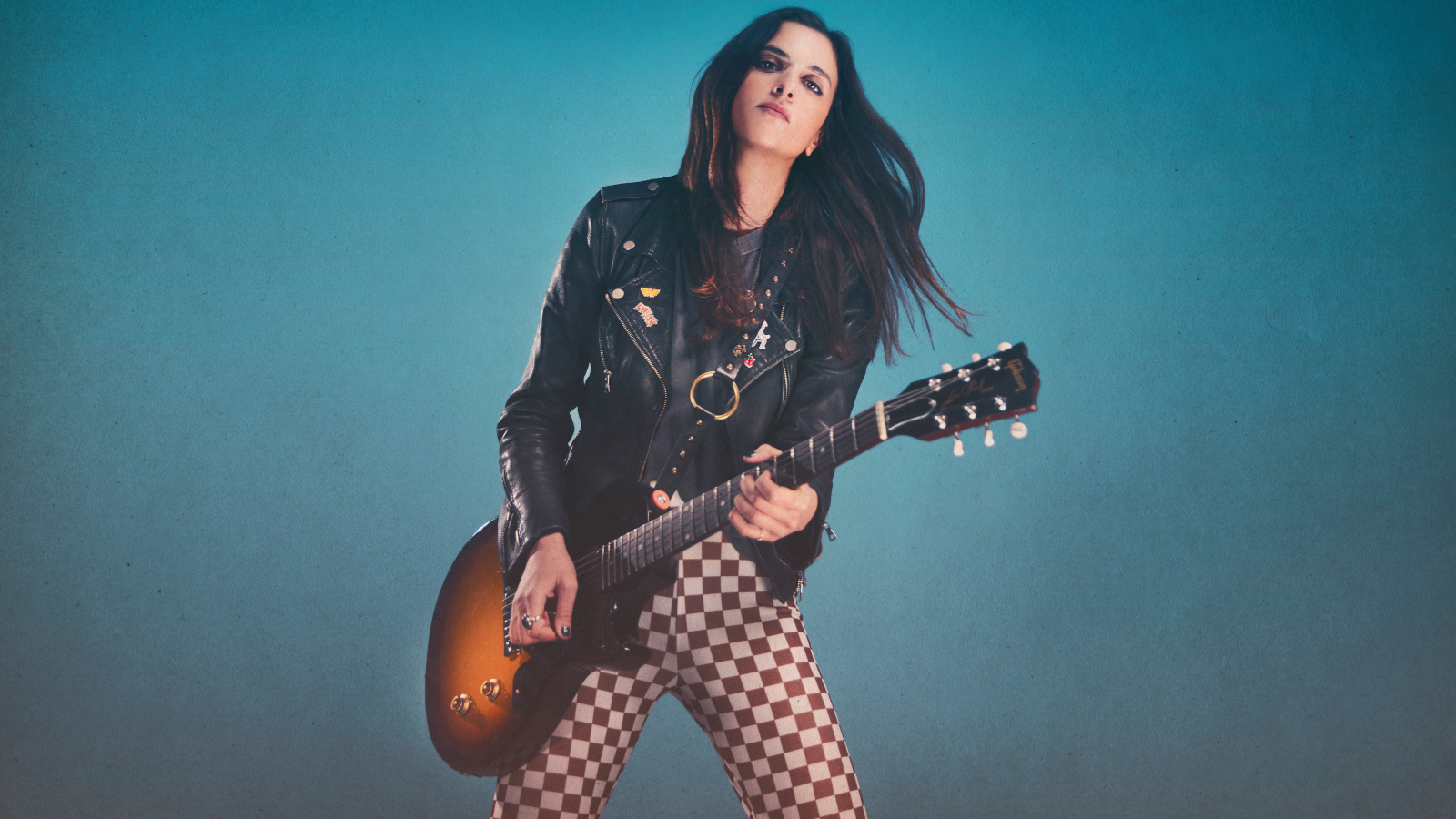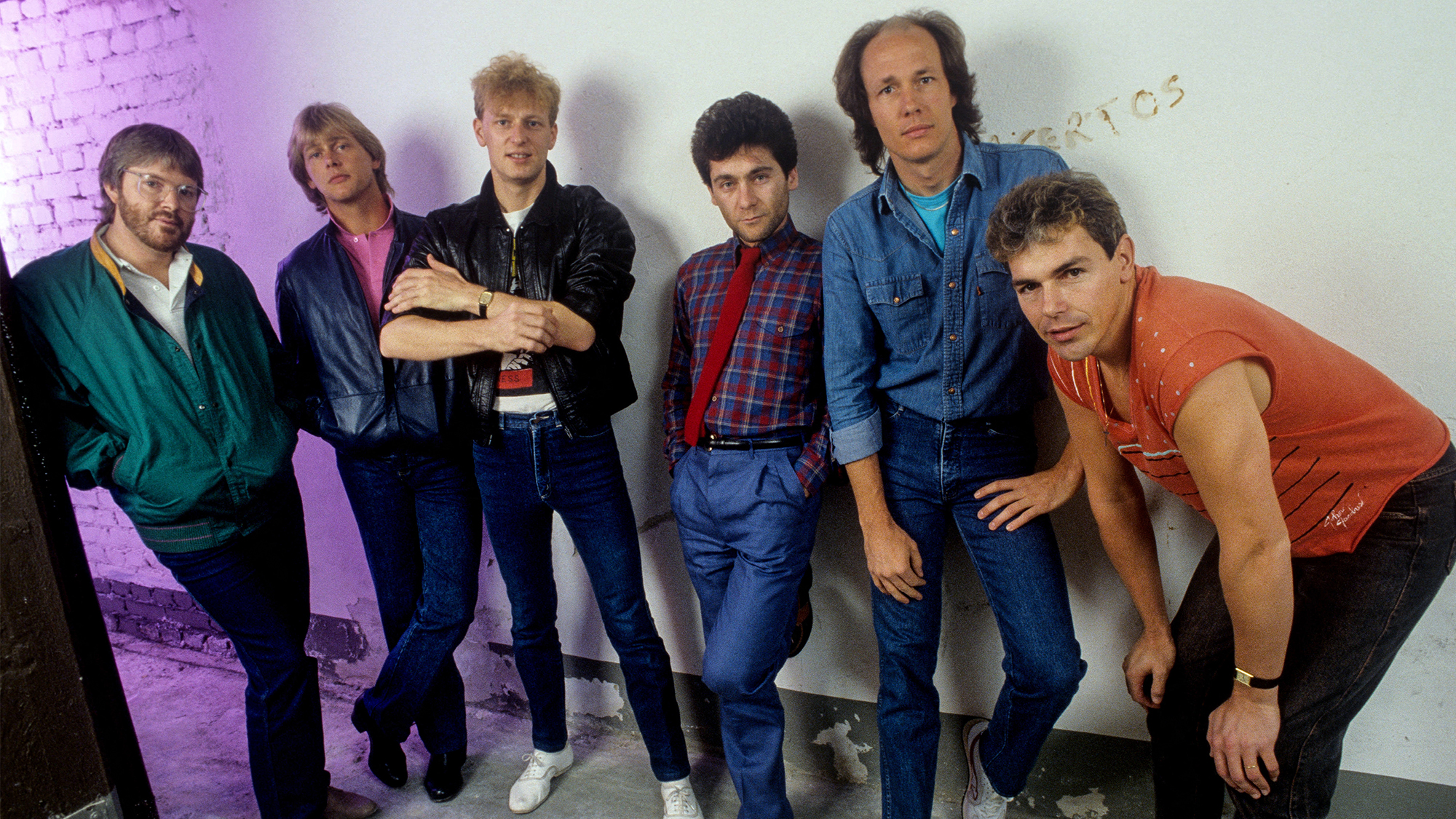“This Is Me Rediscovering Myself and Finally Being Myself”: Laura Cox Reaches a New Level With ‘Head Above Water’
The French guitar phenom opens up about her latest album

Laura Cox has performed for more than 100 million people on her YouTube channel – not including the rapt audiences she’s won over on both sides of the Atlantic – but until recently, she had never been the sole guitarist onstage.
“I’m the only guitar player right now, and I’m touring with a keyboard player because I wanted to try some new directions,” she explains via Zoom, ahead of releasing her third album, Head Above Water (earMUSIC). “I wasn’t sure I could make it, but I surprised myself, in a good way.”
Now her live audiences are learning what half a million subscribers already knew – when Cox picks up an electric guitar, it’s going to scream. After parting with second guitarist Mathieu Albiac, who played on the Laura Cox Band’s first two albums, Cox found a new path to primal blues-rock glory.

While her 2017 debut, Hard Blues Shot, and the 2019 follow-up, Burning Bright, were primarily hard-rocking affairs, Head Above Water dials back the fury in favor of more fleshed-out arrangements and a wider array of instrumentation.
Instead of working out the songs with the band in her native France, Cox holed up in Portugal by herself to write and demo the album’s 11 tracks. Somewhere along the way, she hit pay dirt. The title track swaggers out of the speakers like a lost Shake Your Money Maker-era Black Crowes gem, riding a lean, ringing riff to an anthemic chorus.
Cox’s sweeping solo betrays her devotion to the Slash and Angus Young schools of tasteful, melodic leads – but that’s just window dressing. Throughout Head Above Water, she shines as a multi-instrumentalist exploring outside her comfort zone.
It feels good not to be restrained to the classic rock instruments
Laura Cox
While living abroad, Cox felt free to indulge her musical interests by playing banjo, which she first flexed on the Hard Blues Shot cut “Barefoot in the Countryside.” On Head Above Water, she works the instrument into new songs like “So Long,” “Old Soul” and “Seaside.”
All the latest guitar news, interviews, lessons, reviews, deals and more, direct to your inbox!
On “Before We Get Burned” and “Glassy Day,” banjo commingles with atmospheric lap steel, another sonic tool new to her arsenal. “It gives me a different perspective and more ideas on how to arrange rock songs when I know I can add a different color, a different texture coming from these bluegrass instruments,” she says. “It opens a new horizon. And it feels good not to be restrained to the classic rock instruments.”
Cox still found room for barnburners like “One Big Mess” and “Swing It Out,” and she assures us her live shows with the new band configuration and songs will rock every bit as hard as fans have come to expect from the Laura Cox Band.
This marks your debut as the sole guitarist in your band. How did you figure out how to cover both roles in performance?
A lot of the guitars were just doubled onstage, so I didn’t have to really think about it. There were also moments in songs where, before, with Mathieu, I wasn’t playing during some verses, for example. I just took every song and thought, What is the most important part?, and then I just learned all the main parts of the song. It was hard work, but I’m really excited about the future.
I wanted to be more free and to put more of myself in this time
Laura Cox
How did that impact your writing?
The writing process for Head Above Water was different compared to the previous albums. I wasn’t with the band members when I wrote most of it; I moved to Portugal and the band stayed in Paris. I recorded complete demos on my computer and then sent them to the band members, and we arranged everything in the rehearsal studio.
Did you have a specific vision for the album in mind?
I wanted to be more free and to put more of myself in this time. I didn’t really know where I was going, but I knew I wanted something less heavy than the previous albums – something a bit more southern, with more country influences. That’s why I felt more free to play different instruments. I played a bit of banjo and lap steel, and that’s a side of me I really wanted to experience more.
Did the banjo and lap steel come naturally?
I am playing by ear mostly, and that’s also what I’m mostly doing on the guitar. I really wanted to experiment more with different instruments, and it felt good to be able to include this in the album.
When you’re composing and working with other instruments, what’s your process for coming up with different parts and melodies?
I didn’t want to play fast just to play fast – I wanted to play meaningful notes
Laura Cox
When I’m starting to write, the first thing that comes is the guitar riff. Once I have it, I can think about adding other instruments, what type of vocals it should have and what lyric theme I should explore. Once I have the guitar riff and maybe the rough guitar structure, then I can think about the rest. When it’s a lead banjo part, I’m just following the melody and the lead I have in my head. And if I can sing it, I know I can play it.
What are your favorite riffs or solos on the record?
On the previous albums, when some people were saying they want to hear fast playing and tapping and sweeping and blah, blah, blah, I listened. And for this one, I didn’t want to play fast just to play fast – I wanted to play meaningful notes. The type of playing on this album is more melodic. There are fewer notes, but I thought more about which notes I was using.
I think one of my favorite solos would be “So Long,” because I really like the tone I found. I also really like the “Wiser” solo. There’s a slow bridge in the middle of the song, and also the ending solos because they’re a bit different from what I usually do, and I’m able to play less, I’m able to play softer, and in the end it sounds better for me.
Between your YouTube videos and live clips, it’s fun to see such a mix of guitars. What are your favorites?
There are a lot that I don’t have anymore, that I sold or weren’t mine at the time. But now there are two or three guitars that I would never sell: my Gibson Les Paul Classic Plus, a Honeyburst from 1997 and, my other main guitar, a Gibson Les Paul Junior from 2019. And of course, I’m never selling the Epiphone Slash Signature goldtop that I used to use a lot for the covers on YouTube.
I love that the Junior has just one pickup and two knobs. I think that’s the kind of guitar I prefer
Laura Cox
The latest addition to my small collection is an Epiphone Coronet. It reminded me of the Junior, but it’s not an expensive guitar. I’ve been playing with this one a bit onstage and in the rehearsal studio, and it really feels great.
That’s surprising, since you play Telecasters in a lot of your videos.
Yeah, I love Telecasters, but what I love with the Junior and the Coronet is that they are fat-sounding guitars but more simple. They also have kind of a Tele side – they’re raw and really simple rock and roll machines. I love that the Junior has just one pickup and two knobs. I think that’s the kind of guitar I prefer. And they have a bit of the twang that you can find on a Tele.
What amps made the cut?
Right now I’m in search of a new tone. I realized when I was recording Head Above Water that maybe I needed more. In the studio, I used a combination of my Orange Rockerverb 100 with an Orange 4x12, plus a Marshall 2204 combo from the ’80s. The combination worked really well, but I’m still experimenting for the new tour.
If albums are chapters in the same book, what role does Head Above Water play in your story?
Head Above Water is where I finally decided to trust myself and not listen to all the people saying you have to play this and this. And for the first time, I felt really free.
So this is me rediscovering myself and finally being myself. It’s not the conclusion, for sure, because I’m very motivated for the next one. But I think I’m finally opening myself up, and it really feels great.
Order Laura Cox’s Head Above Water here.
Jim Beaugez has written about music for Rolling Stone, Smithsonian, Guitar World, Guitar Player and many other publications. He created My Life in Five Riffs, a multimedia documentary series for Guitar Player that traces contemporary artists back to their sources of inspiration, and previously spent a decade in the musical instruments industry.

